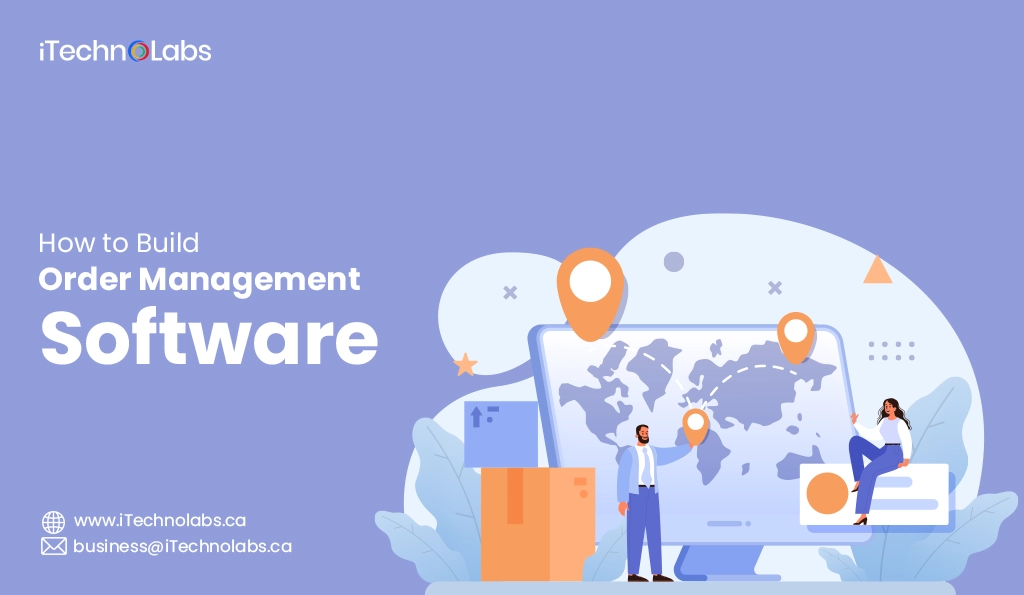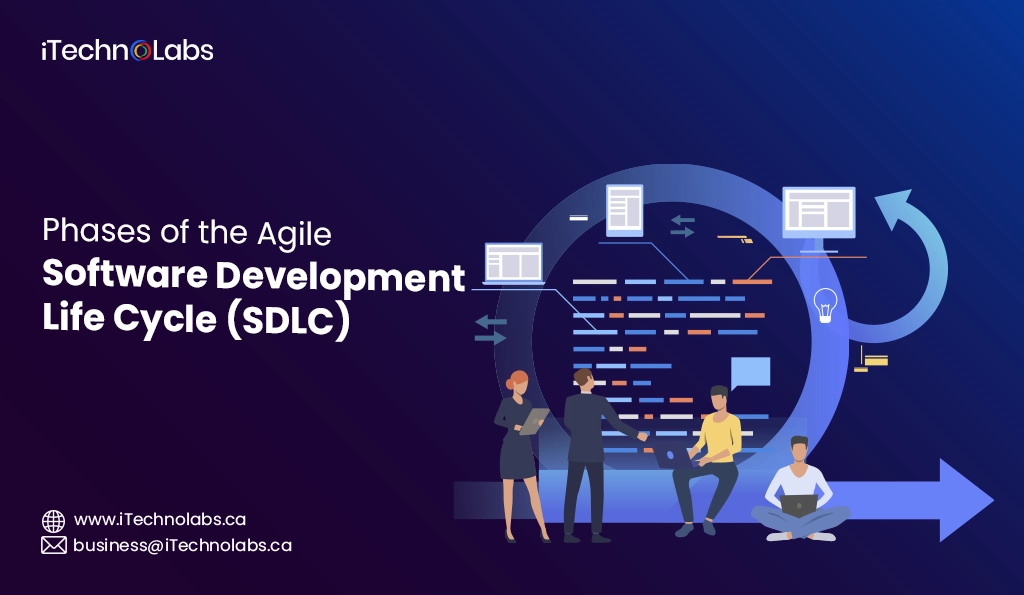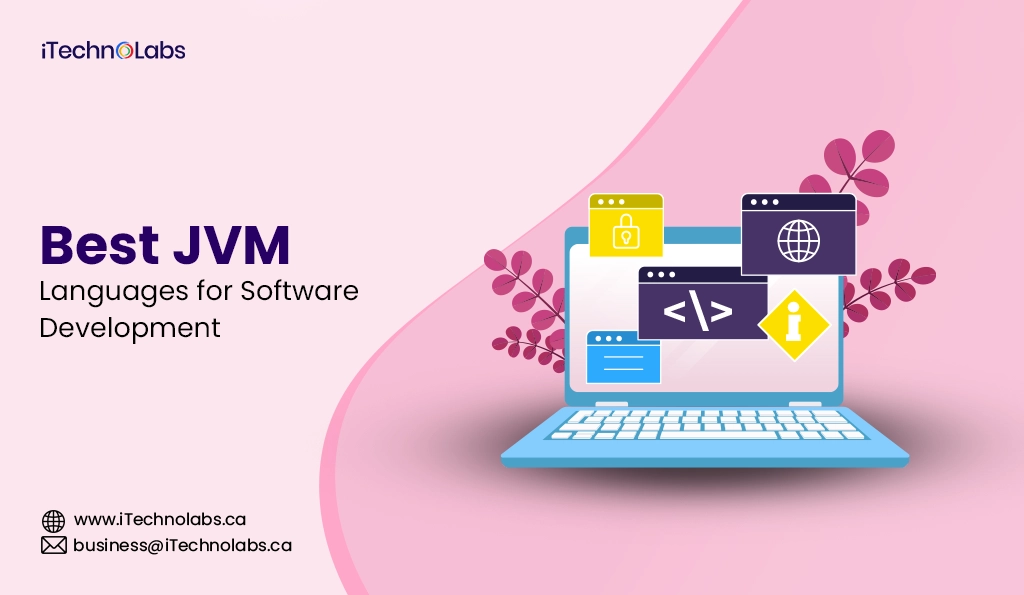Order management software has become essential for businesses in today’s world, and its importance is only expected to grow as we move toward 2024-2025. With the rapid pace of technological advancements and increasing customer expectations, businesses must adapt quickly to stay competitive. As customer demands increase along with stiff competition in the market, businesses need to streamline their order management process to stay ahead. Efficient order management systems can significantly reduce errors, improve customer satisfaction, and save valuable time and resources.
This article will explore the myriad ways developing advanced order management software in 2024 can benefit businesses. We will delve into the critical features that should be incorporated to ensure seamless operations, such as real-time inventory tracking, automated order processing, and robust analytics capabilities. Additionally, we will discuss how these innovations can drive operational efficiency, from reducing manual labor to accelerating fulfillment times.
We will also look at some of the latest trends in technology and how they can be leveraged to enhance order management processes. This includes the integration of artificial intelligence (AI) for predictive analytics, blockchain for secure transactions, and the Internet of Things (IoT) for real-time data collection. By embracing these cutting-edge technologies, businesses can not only meet but exceed customer expectations, ultimately fostering loyalty and driving growth.
Moreover, we will examine case studies of companies that have successfully implemented advanced order management systems, highlighting the tangible benefits they have experienced. From small startups to large enterprises, the impact of efficient order management is far-reaching, demonstrating its critical role in the success of modern businesses. Join us as we navigate the evolving landscape of order management and unlock the potential of technology to revolutionize the way businesses operate.
Introduction of the Order Management Software
The rise of e-commerce and the increasing demands of customers have made efficient order management a necessity for businesses. Order management software is designed to streamline and automate the process of receiving, processing, tracking, and fulfilling orders. It provides real-time visibility into inventory levels, order status, and customer information, allowing businesses to make data-driven decisions and provide exceptional service.
In recent years, there has been a surge in the development of advanced order management software that goes beyond traditional features. With the incorporation of cutting-edge technologies such as AI, blockchain, and IoT, these systems are transforming how businesses manage their orders and operations.
Order Management System in Different Industries
The benefits of order management software are not limited to a single industry, as it has proven to be valuable in various sectors. Retail and e-commerce industries have been early adopters of these systems, recognizing the need for efficient order processing and fulfillment to stay competitive. However, other industries such as manufacturing, healthcare, and food services have also started implementing order management software to improve their processes.
1. Retail
The retail industry has been one of the first to adopt order management software to keep up with the ever-growing demands of customers. With features such as real-time inventory tracking, omnichannel order fulfillment, and automated processes, retailers can efficiently manage all aspects of their orders. This enables them to provide a seamless shopping experience for customers across various channels, including online, in-store, and mobile.
2. Manufacturing
Order management software has greatly benefited the manufacturing industry by streamlining their production processes. With features like automated order routing, inventory tracking, and real-time order updates, manufacturers can ensure smooth operations from order placement to delivery. This not only improves efficiency but also reduces errors and delays, resulting in cost savings for the business.
3. E-commerce
E-commerce businesses rely heavily on efficient order management to ensure timely and accurate delivery of products. With the help of automated processes, these systems can handle large volumes of orders while maintaining accuracy and speed. As per the e-commerce app development company, the system is integrated with features like real-time inventory updates, multiple shipping options, and easy integration with various e-commerce platforms.
4. Healthcare
The healthcare industry has also embraced order management software to streamline their processes and improve patient care. By automating the ordering process for medical supplies, equipment, and medications, healthcare facilities can ensure they always have the necessary resources. This not only saves time but also ensures better patient outcomes.
5. Food and Beverage
Restaurants, cafes, and other food and beverage businesses can greatly benefit from order management software. With features like online ordering, table management, and inventory tracking, these systems help streamline the entire process from placing an order to serving it to the customer. This not only improves efficiency but also enhances the overall dining experience for customers.
6. Fashion and Apparel
The fashion and apparel industry is highly competitive and fast-paced. Order management software helps businesses stay on top of their orders, manage inventory, and track shipments, ensuring that customers receive their purchases on time. This not only improves customer satisfaction but also boosts brand reputation.
7. Subscription Services
From streaming platforms to monthly subscription boxes, order management software has become crucial for businesses that offer subscription services. These systems are designed to handle the complexities of recurring orders effortlessly, ensuring a smooth and efficient workflow. With features like automatic billing, customer account management, and customizable subscriptions, these systems make it easier for companies to manage their recurring orders and keep customers satisfied. Additionally, order management software often includes analytics tools that provide valuable insights into customer behavior and preferences, helping businesses refine their offerings and improve customer retention. By simplifying the administrative tasks associated with subscriptions, this software allows companies to focus on growth and innovation.
Top 5 Order Management Software
1. Shopify
Shopify is a popular cloud-based order management software for small and medium-sized businesses. With features like inventory tracking, customer profiles, and order fulfillment tools, Shopify streamlines the entire process from ordering to shipping. It also integrates seamlessly with various e-commerce platforms, making it an ideal choice for online retailers.
2. Fishbowl
Fishbowl is an affordable and user-friendly order management system that offers a range of features, including inventory tracking, multi-channel sales support, and shipping automation. It also integrates with popular accounting software like QuickBooks, making it a suitable option for small businesses.
3. Orderhive
Orderhive is a comprehensive order management software that caters to businesses of all sizes. With features like inventory management, shipping integration, and multi-channel sales support, Orderhive simplifies the entire process of managing orders. It also offers real-time analytics and reporting tools to help businesses make data-driven decisions.
4. Mckesson
Mckesson is a powerful order management software designed specifically for the healthcare industry. It offers features like inventory tracking, automated purchasing, and real-time reporting to help healthcare businesses manage their orders efficiently. Mckesson also integrates with various electronic health record systems, making it a great choice for medical practices.
5. Ordermark
Ordermark is a cloud-based order management software that caters specifically to the needs of manufacturing and distribution businesses. It offers features like inventory tracking, production scheduling, and supplier management to help streamline the entire ordering process. It also integrates with popular accounting and e-commerce platforms, making it a versatile option for businesses in this industry.
Benefits of Developing the Order Management Software
1. Enhanced Order Accuracy and Speed
With efficient order management software in place, businesses can ensure that orders are processed accurately and quickly. This not only reduces the chances of errors and delays but also helps in tracking inventory levels in real time. Improved order accuracy and faster processing times contribute to a smoother supply chain and enhanced operational efficiency. Ultimately, these benefits lead to a more satisfied customer base, as customers receive their products on time and in perfect condition.
2. Real-time Inventory Visibility
One of the key benefits of order management software is its ability to provide real-time visibility into inventory levels. This allows businesses to keep track of their stock levels, monitor product movement, and identify any potential stockouts or overstock situations. With accurate and up-to-date information at their fingertips, businesses can make informed decisions about purchasing and production schedules, ensuring that they always have enough stock to fulfill customer orders. Additionally, the software can help to reduce wasted resources and improve overall efficiency by streamlining inventory management processes. It can also integrate with other systems such as accounting and customer relationship management (CRM) software, providing a comprehensive solution for managing all aspects of the business. By leveraging these capabilities, companies can enhance their operational efficiency, reduce costs, and improve customer satisfaction.
3. Data-driven Decision Making
Order management software collects and stores valuable data on customer orders, inventory levels, and fulfillment processes. By analyzing this data, businesses can gain insights into their operations and make more informed decisions. For example, they can identify trends in customer demand and adjust production or purchasing accordingly. They can also analyze sales performance and identify areas for improvement or growth opportunities. This data-driven approach to decision-making helps companies stay competitive in a rapidly changing market by enabling them to respond quickly to shifts in demand or supply.
4. Improved Omnichannel
With order management software, businesses can seamlessly manage orders and inventory across multiple sales channels. This includes online platforms, brick-and-mortar stores, and third-party marketplaces. By centralizing data from these different channels, businesses can gain a holistic view of their operations and better understand how each channel is performing. This allows them to optimize their omnichannel strategy and provide a seamless shopping experience for customers.
5. Scalability and Adaptability to Business Growth
Order management software is designed to scale with a business as it grows. As order volumes increase, the system can handle higher levels of orders and inventory without compromising on efficiency or accuracy. This eliminates the need for manual processes and allows businesses to focus on other areas of growth. Additionally, order management software can adapt to changing business needs, such as expanding into new markets or adding new sales channels.
Key Steps to Create Order Management Software
1. Conduct Market Research
Before developing order management software, it’s important to conduct thorough market research. This involves identifying the target market, understanding their needs and pain points, and analyzing competitors in the industry. This information will help inform the features and functionalities of the software, making it more appealing to potential customers.
2. Choose the Best Tech Stack
The tech stack refers to the combination of technologies and frameworks used to build the order management software. It’s crucial to choose the best possible tech stack that can support the desired features and provide a seamless user experience. This may include programming languages, databases, and other tools.
3. Craft an Intuitive UI/UX
A user-friendly interface is crucial for any software, and order management systems are no exception. The UI/UX should be carefully designed to make it easy for users to navigate and perform tasks such as order processing, inventory management, and reporting.
4. Develop the App
With the market research, tech stack, and UI/UX design in place, it’s time to develop the order management software. This involves coding, testing, and debugging to ensure that the software functions as intended. The development phase requires meticulous attention to detail, from writing clean and efficient code to thoroughly testing each feature. Debugging is crucial to identify and fix any issues that arise, ensuring a smooth and reliable user experience. Collaboration among developers, testers, and designers during this phase is key to delivering a high-quality product.
5. Testing and Quality Assurance
Once the software is developed, it’s essential to conduct thorough testing and quality assurance to ensure that all features work as intended. This includes functionality testing, compatibility testing, and user acceptance testing. Any issues or bugs identified during this phase should be addressed before launching the software to customers.
6. Launching and Marketing
With a fully functional and tested order management system, it’s time to launch it to the market. This involves creating a marketing strategy to promote the software and attract potential customers. Leveraging social media, email marketing, and other digital channels can help reach a wider audience and generate interest in the product.
7. Provide Continuous Support and Upgrades
The work doesn’t end after launching the software. To maintain customer satisfaction, it’s crucial to provide continuous support and upgrades. This includes addressing any technical issues that may arise, adding new features based on customer feedback, and staying updated with industry trends. Additionally, it’s important to conduct regular performance assessments to ensure the software remains efficient and user-friendly. Engaging with customers through surveys and forums can also provide valuable insights for future improvements. By staying proactive and responsive, a software company can foster long-term loyalty and keep its user base satisfied.
Must-have Features of an Order Management Software
When developing order management software, certain essential features should be included to ensure its effectiveness and efficiency. These features include:
- Real-time Tracking – Customers want to know the status of their orders at all times. Real-time tracking provides them with up-to-date information and increases transparency in the ordering process.
- Inventory Management – An order management system should have the ability to manage inventory levels and automatically update them as orders are placed or fulfilled. This helps prevent overselling and ensures accurate stock levels.
- Integrations with E-Commerce Platforms – For businesses selling products online, it’s important that the order management software integrates seamlessly with their e-commerce platform. This allows for a smooth flow of data and prevents any discrepancies in orders.
- Multi-channel Order Management – Customers today expect to be able to place orders through various channels such as online, in-store, or over the phone. A robust order management system should be able to handle orders from multiple channels all in one place.
- Automated Order Routing- To optimize efficiency, an order management system should have the ability to automatically route orders to the appropriate fulfillment center based on factors such as inventory levels and shipping distance. This eliminates the need for manual order routing and reduces the chances of errors.
- Order Editing and Cancellation – Customers often change their minds or make mistakes when placing orders, so order management software needs to have the ability to edit or cancel orders before they are shipped out. This helps to maintain customer satisfaction and prevents unnecessary returns or refunds.
Cost Analysis to Create Order Management Software
Developing effective order management software involves various costs that businesses need to consider. Here’s a breakdown of the potential costs:
1. Development Costs
- In-House Development: Hiring a team of developers, designers, and project managers can cost anywhere from $100,000 to $500,000 annually. This includes salaries, benefits, and other overheads.
- Outsourcing: Outsourcing development to a software development firm or freelancers can range from $50,000 to $200,000, depending on the complexity of the software and the hourly rates of the developers.
2. Software and Tools
- Licensing Fees: Utilizing development tools, frameworks, and APIs may incur licensing fees ranging from $10,000 to $50,000 per year.
- Testing Tools: Quality assurance tools are crucial for ensuring the software is bug-free. These tools may cost between $5,000 to $20,000 annually.
3. Infrastructure Costs
- Servers and Hosting: Cloud hosting services such as AWS, Google Cloud, or Azure can cost between $1,000 to $10,000 per month, depending on the usage and scale of operations.
- Database Management: Fees for database management systems, including maintenance and support, could range from $1,000 to $5,000 per month.
4. Maintenance and Support
- Ongoing Support: Post-launch maintenance and support are essential for the software’s longevity and efficiency. These services might cost between $20,000 to $100,000 annually.
- Updates and Upgrades: Regular updates and additional feature insertion could also add to the costs, typically running about $10,000 to $50,000 per year.
5. Miscellaneous Costs
- Training and Onboarding: Training staff and users to efficiently use the new system might add an extra cost of $5,000 to $15,000.
- Marketing and Promotion: Introducing the new system to the market could require marketing expenditures ranging from $10,000 to $50,000.
Key Order Management KPIs & Metrics To Track
1. Order Picking Accuracy
Order picking accuracy refers to the percentage of orders that are fulfilled correctly without any errors or discrepancies. It is a crucial metric for measuring the efficiency and effectiveness of an order management system, as inaccurate orders can result in customer dissatisfaction and loss of revenue. High order picking accuracy ensures that customers receive exactly what they ordered, in the right quantities and condition, which enhances customer trust and loyalty. Furthermore, maintaining a high order-picking accuracy can minimize the need for returns and exchanges, thereby reducing additional operational costs.
2. Average Order Value
The average order value (AOV) is the average amount of money a customer spends on each order. It is calculated by dividing the total revenue generated by the number of orders placed within a specific period. For instance, if a business generates $10,000 in revenue from 200 orders in a month, the AOV would be $50. Tracking AOV can help businesses identify trends in customer spending and make informed decisions about pricing, promotions, and cross-selling opportunities. Additionally, an increasing AOV can indicate improved customer satisfaction and effective marketing strategies, while a decreasing AOV might signal the need for adjustments in product offerings or sales tactics.
3. Order Fulfillment Cycle Time
Order fulfillment cycle time is the duration it takes for an order to be processed, shipped, and delivered to the customer. It starts when the order is placed by a customer and ends when they receive their product or service. This KPI measures the efficiency of the order management process and can help identify bottlenecks that delay order delivery. A shorter cycle time means faster delivery and higher customer satisfaction, while a longer cycle time can result in delayed orders, unhappy customers, and lost sales.
4. Rate of Returns
The rate of returns is the percentage of orders that are returned by customers. It is calculated by dividing the number of returned orders by the total number of orders placed within a specific period. A high rate of returns can be an indication of product quality issues, incorrect order fulfillment, or inadequate customer expectations. Monitoring this KPI can help businesses identify problem areas and take corrective actions to reduce returns and improve customer satisfaction. It can also aid in identifying popular products with higher return rates, allowing businesses to make necessary improvements or discontinue them altogether.
5. Perfect Order Rate
The perfect order rate measures the percentage of orders that are fulfilled without any errors or issues. It takes into account factors such as on-time delivery, accurate order processing, and complete and undamaged products. This KPI reflects the overall efficiency of the supply chain and customer service processes. A high perfect order rate indicates a well-functioning business operation with satisfied customers, while a low rate can indicate areas for improvement in terms of product quality, inventory management, or customer service.
Tech Stack for Order Management Software Development
Developing an efficient and effective order management software requires a well-rounded tech stack that can handle the various aspects of order processing. Some essential technologies to consider for building an order management system include:
1. Database Management Systems (DBMS)
A DBMS is necessary for storing and organizing large amounts of data related to orders, customers, products, inventory, and more. Popular options include MySQL, Microsoft SQL Server, Oracle, and PostgreSQL.
2. Programming Languages
The choice of programming language depends on the specific requirements and preferences of the development team. Commonly used languages for building order management systems include Java, C#, PHP, and Python.
3. Front-end Development Frameworks
To create a user-friendly and visually appealing interface for the order management system, front-end development frameworks such as AngularJS, React, or Vue.js can be used. These frameworks provide pre-built components and tools to streamline the development process.
4. Application Programming Interfaces (APIs)
APIs are essential for integrating different systems and technologies within the order management software stack. APIs allow for seamless communication and data exchange between various applications, making it easier to connect the order management system with other third-party services, such as payment gateways and shipping carriers.
5. Cloud Computing Services
Cloud computing has revolutionized the way software is developed and deployed. It offers scalability, flexibility, cost-effectiveness, and security for order management systems. Popular cloud platforms like Amazon Web Services (AWS), Microsoft Azure, or Google Cloud Platform provide infrastructure and services to support the development of robust and reliable order management software.
How can iTechnolabs help you to build an Order Management Software system?
iTechnolabs a leading software development company can help you in building a custom order management software system tailored to your specific business requirements. Our team of experienced developers and designers will work closely with you to understand your needs and create a user-friendly and efficient solution.
We follow an agile development approach, ensuring regular communication and collaboration throughout the development process. Our experts have expertise in various programming languages, databases, front-end frameworks, and cloud computing platforms mentioned above, allowing us to provide you with a robust and scalable order management system.
- Custom Development: We offer tailor-made solutions designed specifically to match your unique business requirements and processes. Our team works closely with you to understand your needs and create software that fits seamlessly into your operations.
- Agile Methodology: Utilizing Agile methodology, we provide regular updates, incorporate feedback loops, and make iterative improvements throughout the development cycle. This approach ensures the highest quality and adaptability to changing requirements.
- Expert Team: Our team consists of skilled professionals with extensive experience in various programming languages, databases, and front-end frameworks. We bring a wealth of knowledge and expertise to every project, ensuring successful outcomes.
- Cloud Integration: We leverage popular cloud platforms like AWS, Azure, and Google Cloud to create scalable and secure infrastructure solutions. Our cloud integration services ensure your applications are robust and can handle growth efficiently.
- User-friendly Design: Our focus on intuitive UI/UX design enhances user experience and operational efficiency. We aim to create interfaces that are not only functional but also enjoyable to use, making your applications accessible to a broader audience.
- End-to-End Support: From initial planning and development to deployment and ongoing maintenance, we provide comprehensive support at every stage. Our end-to-end services ensure a smooth transition from ideas to fully functional solutions.
- Data Security: We implement robust security measures to protect sensitive business data. Our focus on data security includes encryption, access controls, and regular security audits to safeguard your information.
- Third-party Integration: We facilitate seamless integration with essential services like payment gateways, shipping carriers, and other third-party providers. This ensures that your system works harmoniously with existing business processes.
- Scalability: We design and develop systems capable of growing with your business needs. Our scalable solutions ensure that as your business expands, your technology infrastructure can support increased demand and complexity.
Are you planning to develop an order management software system?
Choosing iTechnolabs for building your Order Management Software system offers several distinct benefits that can enhance your business operations. Firstly, our expertise in custom software development ensures that the system is tailored to meet the specific needs of your business, resulting in increased efficiency and reduced operational costs. Our cloud integration services provide a scalable and secure infrastructure, enabling your software to handle growth seamlessly and ensuring data integrity across distributed environments.
- Custom-Tailored Solutions: iTechnolabs specializes in creating software solutions tailored to the unique needs of your business, ensuring that the Order Management Software fits perfectly with your existing processes and workflows.
- Enhanced Productivity: By streamlining order management processes, our software significantly reduces manual work, enabling your team to focus on more strategic tasks and boosting overall productivity.
- Cost Reduction: Our software helps in reducing operational costs by automating routine tasks and minimizing errors, leading to more efficient resource utilization.
- Real-time Analytics: Gain crucial insights into your business operations with real-time data analytics. Our software provides detailed reports and dashboards that help you make informed decisions quickly.
- Improved Accuracy: Automation and integrated checks minimize the risk of human error, ensuring that your order management processes are executed flawlessly.
- Seamless Integration: Our Order Management Software is designed to integrate seamlessly with other business systems, including ERP, CRM, and financial software, ensuring smooth data flow across your organization.
- User-Friendly Interface: The intuitive user interface makes it easy for your team to adapt to the new system with minimal training, enhancing user satisfaction and productivity.
Conclusion:
With the ever-increasing demand for efficient and streamlined order management processes, investing in reliable Order Management Software is crucial for businesses of all sizes. iTechnolabs’ custom-tailored solutions not only cater to your specific needs but also lead to enhanced productivity, cost reduction, improved accuracy, and real-time analytics. Our software’s seamless integration and user-friendly interface make it the perfect choice for businesses looking to optimize their order management processes.
Frequently Asked Questions
Q1. How Much Does It Cost to Create Order Management Software?
A1. The cost of creating Order Management Software varies depending on your business requirements, desired features, and the overall complexity of the software. Factors such as the number of users, integration with existing systems, customization needs, and ongoing support can also influence the final price. It is best to consult with a software provider for a personalized quote to ensure that all your specific needs and preferences are addressed.
Q2. How Long Does It Take to Create Order Management Software?
A2. The time required to create an Order Management Software can vary depending on various factors such as the size and complexity of your business, the number of features and integrations required, and any customization needs. Typically, it can take anywhere from a few months to a year to develop and implement an efficient order management system.
Q3. How Can Order Management Software Improve Business Operations?
A3. Order Management Software can significantly improve business operations by streamlining and automating various processes involved in managing orders, such as order placement, fulfillment, tracking, and invoicing. This leads to increased efficiency, reduced errors and delays, improved inventory management, enhanced customer satisfaction, and ultimately higher profits for the business. Additionally, real-time analytics provided by the software can help businesses make data-driven decisions to optimize their operations further. So investing in efficient Order Management Software is a valuable investment for any business looking to improve its overall performance.
Q4. What Are Some Ongoing Maintenance Requirements For Order Management Systems?
A4. Like any software, an Order Management System requires ongoing maintenance to ensure its smooth and efficient functioning. This includes regular updates and bug fixes to keep the system up-to-date and secure. Additionally, businesses may need to periodically review their processes and make adjustments or integrations as needed to accommodate changing business needs or industry trends. It is also essential to regularly train employees on how to use the system effectively for optimal results. Investing in ongoing support from the software provider can also help address any technical issues or provide guidance on utilizing new features or updates.
Q5. What Security Measures Must Be Implemented To Manage Software?
A5. Security is a critical aspect of any software, especially one that deals with sensitive customer data and financial transactions like an Order Management System. To ensure the security of the system and its users’ data, businesses must implement robust security measures such as encryption for data transmission and storage, user authentication protocols, firewalls, and malware protection. It is also essential to set up access controls to limit who can view or modify specific information within the system. Regular audits and vulnerability assessments can help identify potential security issues and address them promptly. Additionally, keeping backups of all data is crucial in case of any unexpected events or disasters.



















